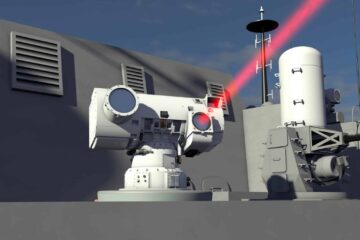The updated IR reflected the implications for UK national security of the Russo-Ukraine war. It also highlighted how the UK will balance defence and security presence across the Euro-Atlantic and Indo-Pacific theatres, the role of maritime power in finding this balance, and the strategic-level issues and programmes that demonstrate the continuing importance of maritime matters for the UK.
Of particular significance was the announcement that Australia, the UK, and the United States are moving ahead on implementing the 2021 AUKUS strategic agreement, which includes co-operative build of a conventionally armed, nuclear-powered submarine (SSN) for Australia.
The IR highlighted the maritime domain as a “strategic arena”, one where developments have significant consequences for UK national interests and international order.
From the Euro-Atlantic perspective, it reinforced UK naval commitment to NATO, with UK Royal Navy (RN) assets supporting the NATO Response Force, Very-high readiness Joint Task Force, standing naval forces, and operations including the ‘Sea Guardian’ Mediterranean-based maritime security patrols, and committing both its nuclear deterrent and conventional deterrent (the latter being its carrier-based high-readiness force) to NATO.
For the Indo-Pacific, the IR highlighted the importance of the maritime domain in building relationships with key regional partners, including India, Malaysia, the Philippines, Thailand, and Vietnam. It also confirmed the UK’s commitment to co-ordinating aircraft carrier deployments with France to build collective Indo-Pacific presence.
More broadly, the IR underscored the UK’s naval and maritime commitment to ensuring global freedom of navigation, for example through RN support to NATO, deepening engagement across the UK-led Joint Expeditionary Force (JEF) maritime task group, deploying RN assets to patrol key global chokepoints including the Straits of Hormuz, and supporting the Five Power Defence Arrangements in the Indo-Pacific.
Overlaying this strategic overview was the operationalisation of AUKUS. “We will move the AUKUS partnership to the implementation phase, equipping Australia with [SSN] capability, and progressing co-operation on advanced military capabilities,” the IR stated.
In 2022, the UK committed to investing an additional GBP2 billion in the BAE Systems submarine-building yard in Barrow-in-Furness, Cumbria. Under a GBP5 billion increase in spending over the next two years announced in the IR, the UK will make a further GBP3 billion investment across its defence nuclear enterprise, to enhance infrastructure, support, and skills development at Barrow, Rolls-Royce in Derby, and the Atomic Weapons Establishment, Aldermaston. “This investment will help to modernise our manufacturing and maintenance capacity so that we can improve submarine availability and increase resilience, as well as supporting the delivery of AUKUS,” the IR stated.
Overall, this investment “will support the delivery of a new, world-class fleet of [SSNs] for the RN,” said the IR. It also “will underpin the delivery of AUKUS, working with the US to deliver the optimum pathway to provide Australia with [SSNs].”
In parallel with the IR’s publication, the leaders of Australia, the UK, and the US met in San Diego to announce more details on Australia’s future SSN programme under AUKUS. The UK and Australia will build a new, bi-national class of submarine – using a UK design, and known initially as SSN-AUKUS – to meet both Australian and UK future SSN requirements. US technologies, drawn from its Virginia-class SSNs, will be incorporated. According to news reports, the first SSN-AUKUS boat will be ready in the late 2030s.
In the interim, starting in the early 2030s, the US will provide three – and possibly five – Virginia-class boats to stand up Australia’s operational SSN capability.
From 2023, Royal Australian Navy (RAN) personnel will be posted to UK and US submarine bases. From 2027, both the RN and the US Navy (USN) will forward-base SSNs to the RAN’s submarine base at HMAS Stirling, Perth, Western Australia.
The IR did not cover RN force structure-level issues, like its future balance between submarine and surface forces or its future frigate programmes like the Type 32. The defence capability implications of the IR will be set out in the Defence Command Paper, scheduled for publication later in 2023.






